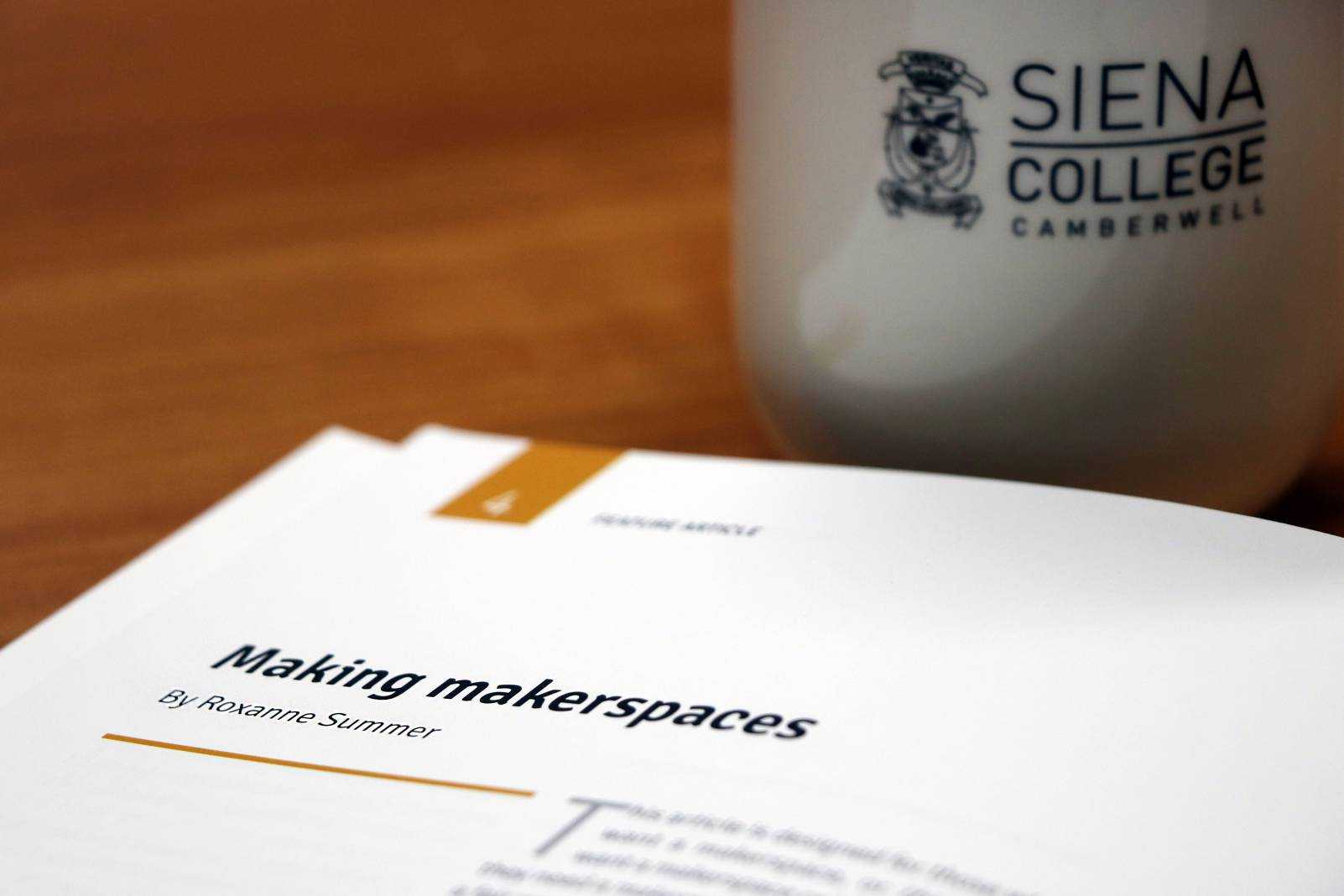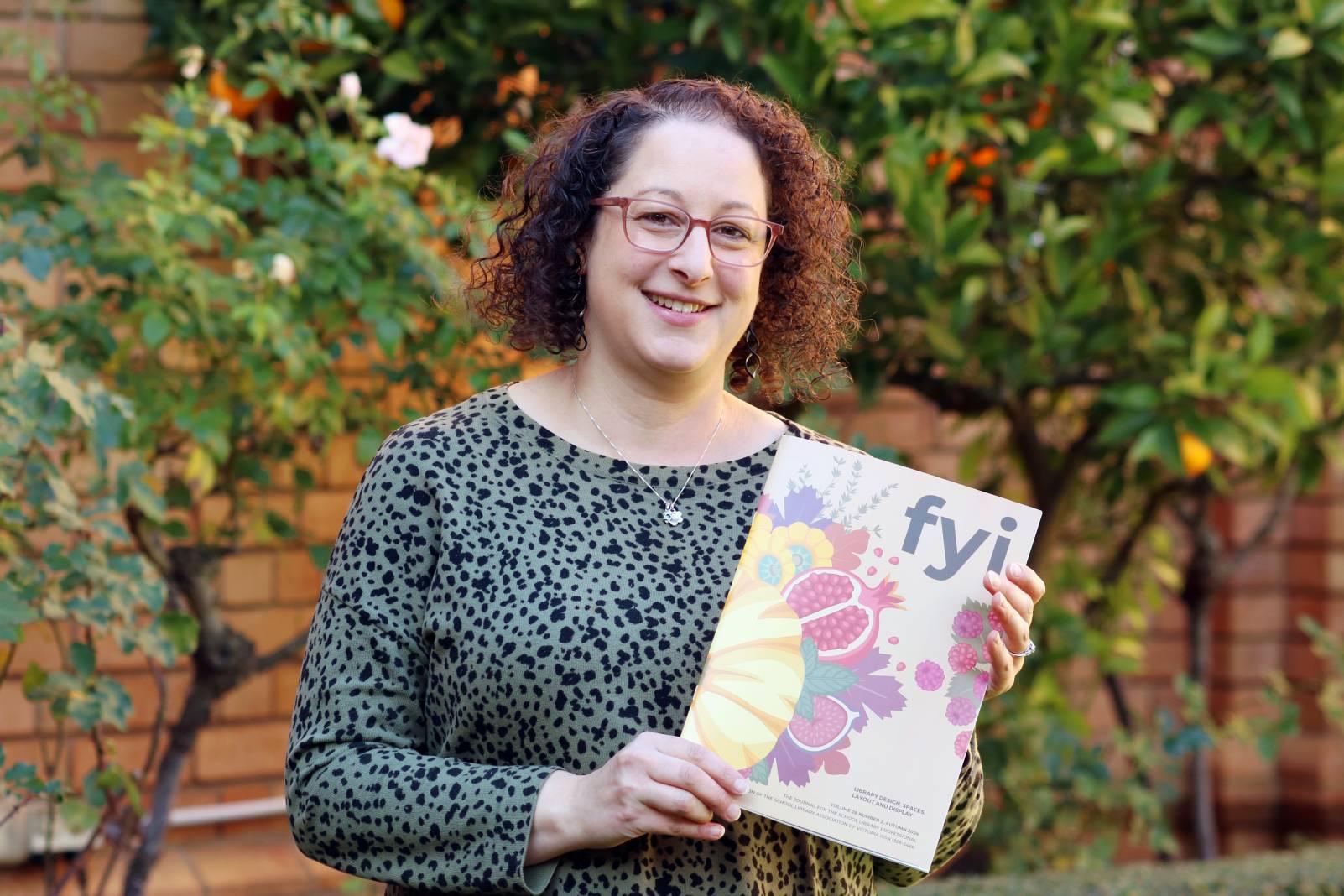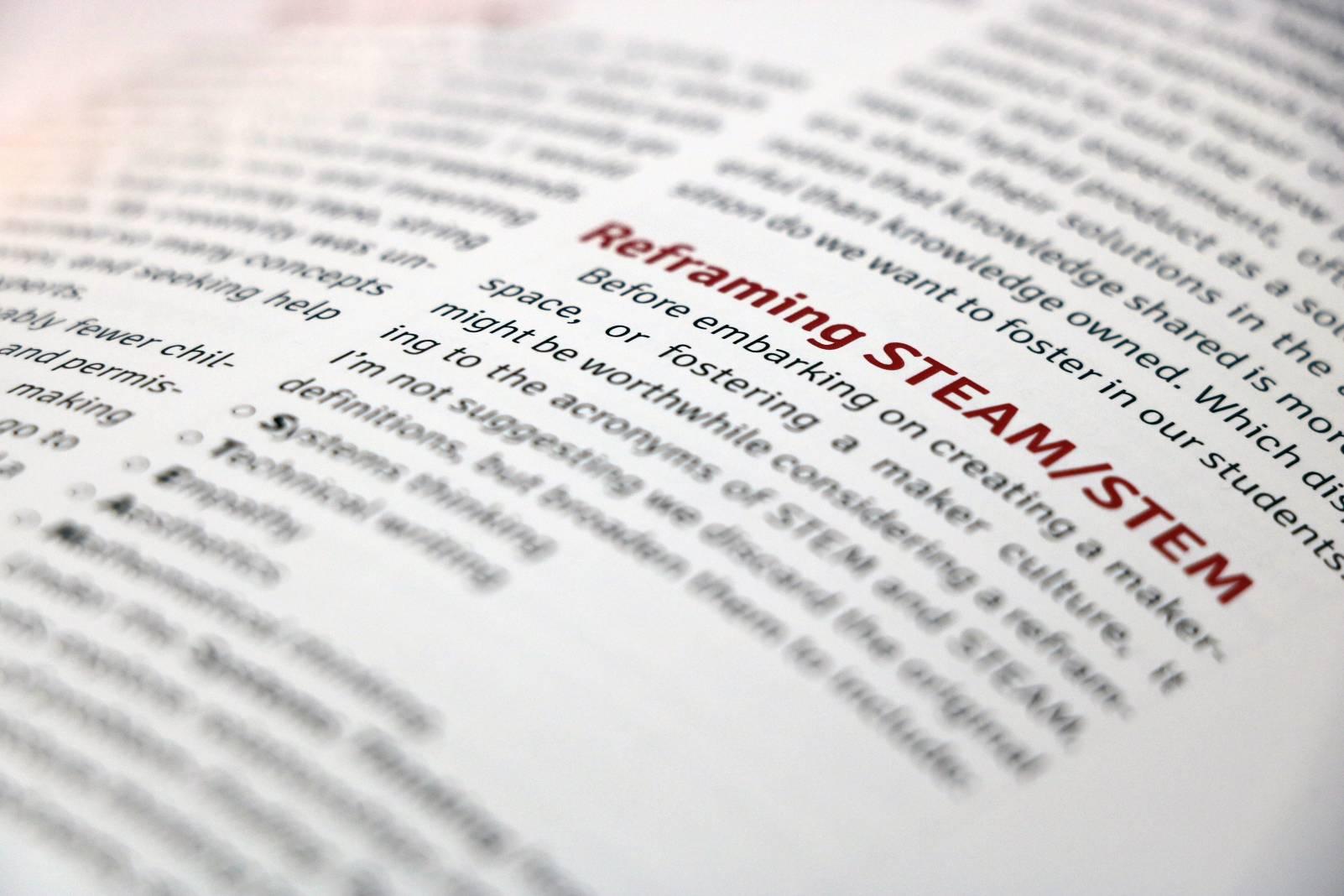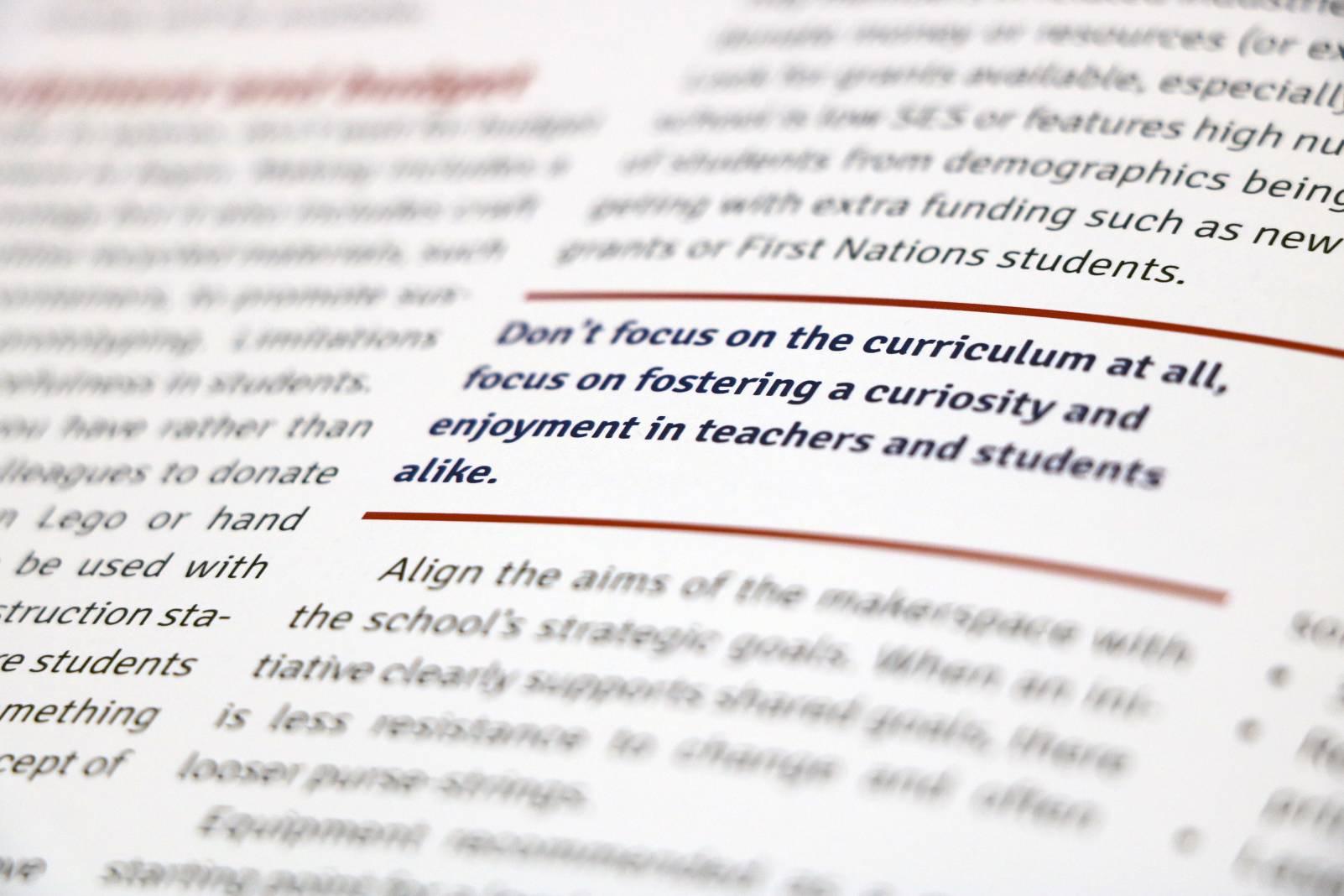


This article is designed for those who want a makerspace, or think they want a makerspace or have been told they need a makerspace. If you are already a fair way down the makerspace path, you can skip to the last section, about the things I learned the hard way. Hopefully this can save you some stress.
FYI is the quarterly print publication from the School Library Association of Victoria.

Roxanne Summer is Head of Albertus Magnus Learning Centre at Siena College in Camberwell. She is an experienced teacher, teacher librarian and digital technology integrator. She is passionate about making and makerspaces and is determined to unlock the potential for creativity in all students and teachers.
As a child, my favourite activity was making things. I had a 'makings box', which was a cupboard in the laundry, filled with boxes and containers that would usually go in the bin but could be useful. I would spend hours of my holidays and weekends constructing marble runs and inventing things, with the help of sticky tape, string and rubber bands. My creativity was unbounded and I learned so many concepts through trial and error, and seeking help from knowledgeable experts.
In today’s society, arguably fewer children are given the time, space and permission to make a mess through making things. Sure, many complete ‘kits’ or go to art classes, but the idea of giving a child a pile of empty packaging, some tape and some scissors and telling them to ‘go make something’ is virtually unheard of. The idea that the end product isn’t known until it’s done is confusing to some and anxiety-inducing to many. Yet these are the concepts central to makerspaces and a maker mindset.
In a school with a maker culture:
There are two types of people in the world: makers and consumers. Consumers, when faced with a product that no longer serves their purpose, usually discard the product or replace it. Usually this process is accompanied by a fair amount of complaining. Many industries support consumers, protected by copyright and patents. Makers approach the situation differently. Makers try to repair or modify an existing product to suit the new purpose. Makers tinker and experiment, often creating a new or hybrid product as a solution. Makers share their solutions in the altruistic notion that knowledge shared is more powerful than knowledge owned. Which disposition do we want to foster in our students?

Before embarking on creating a makerspace or fostering a maker culture, it might be worthwhile considering a reframing to the acronyms of STEM and STEAM. I’m not suggesting we discard the original definitions, but broaden them to include:
Under the Systems Thinking heading, students explore relationships and learn the skills of problem finding. By zooming in from big picture thinking to the individual interconnected parts, students undergo perspective taking.
Technical Writing is about the use of precise and specific technical language. Students need to understand purpose and audience in a technology specific context. An appreciation of the role of user manuals and help guides grows and students are better able to explain and justify their thinking.
Empathy allows students to consider needs of those, often beyond their world view. This skill utilises inclusive design principles and encompasses the burgeoning world of work in the fields of UI (User Interface) and UX (User Experience). Students consider accessibility features and (hopefully) begin to question a lack of such features in the world around them, prompting a desire for change and equity.
Aesthetics is not just about beauty but about design thinking. Students question beauty versus truth: perception versus reality. Combined with Empathy, students seek the crossroads between utility and looks. Other design ideas such as colour theory and form versus function can also come into play. For some, this aspect is the two way bridge between ‘arty’ students and ‘techie’ students.
Mathematical Thinking, which includes computational thinking, is about the logic behind the sums and code, not about creating mathematicians and coders. By looking at the logic, the cause and effect, students who would usually avoid mathematics or balk at the idea of coding, can feel capable and can meaningfully contribute.
So why are makerspaces often in the library? In my opinion, libraries are the BEST places in a school for makerspaces (and the reason I got into school libraries in the first place). Libraries are the 'Switzerland' of a school. They cannot align themselves with any faculty or year level. They must support all strategic goals of the school they are in.
As such, making and makerspaces are a natural fit for a library (or whatever alternate name for library your school employs) because making and libraries are:
Libraries are interdisciplinary because of the unique ability to see what’s happening across the school and make connections between disciplines. Like a matchmaker, libraries can facilitate cross curricular projects by facilitating conversations between teachers who are covering related topics or concepts. A makerspace, as a space belonging to all subjects, gives students permission to break down their siloed view of knowledge and allow themselves to utilise understanding from different subjects simultaneously.
Libraries are transliterate. Students are given multiple ways to interact with reading and writing. Skills of information and media literacies are fostered by library professionals both formally and informally, across a range of platforms, tools and media. Makerspaces provide access to new and emerging technologies within this lens, ensuring that technology is purposeful, not just 'the latest thing'. Transliteracy is not new to libraries, being the focus of an American Library Association Conference was back in 2011! What is new is the link between this and makerspaces.
Libraries provide democratic access to equipment and materials. Not only does this make it easier to justify a large purchase, but it increases students’ exposure and access to such equipment and materials. Makerspaces provide a place to centralise resources, while ensuring support for teachers and students. Libraries are organised places, which are clever with space and often have learned to do much with little.
While making itself is a mindset and not the space itself, having a dedicated space can facilitate more programs and promote the mindset. Sometimes a dedicated space is given or set aside (or built), but this is not always the case, especially in a school where the maker culture grows organically (bottom up). If you don’t have a dedicated space, don’t wait for one! In fact in my experience, it is better to build a space in response to a need that is already there, than to build a space and create the need.
So how do you create the space from nothing? Some ideas are:
Similar to spaces, don’t wait for budget or equipment to begin. Making includes a lot of technology, but it also includes craft and should utilise recycled materials, such as boxes and containers, to promote sustainability and prototyping. Limitations also breeds resourcefulness in students.
Start with what you have rather than what you want. Ask colleagues to donate items such as outgrown Lego or hand tools. Old technology can be used with screwdrivers to form a deconstruction station (avoid hammers here) where students can explore and wonder how something works and be introduced to the concept of reverse engineering.
Data is king! Don’t assume others have observed the buzz that you have, record attendance and usage of your limited resources. With data, you can show the need for more space or resources, or both.
Collaborate with budget holders. Sharing costs over multiple departments can ameliorate financial concerns. After all, if equipment is going to be used cross faculty, then it’s reasonable to share the costs. Your development or marketing department might also have alumni or community members in related industries who can donate money or resources (or expertise). Look for grants available, especially if your school is low SES or features high numbers of students from demographics being targeting with extra funding, such as new migrants or First Nations students.
Align the aims of the makerspace with the school’s strategic goals. When an initiative clearly supports shared goals, there is less resistance to change and often looser purse strings.
Equipment recommended as a good starting point for a low budget but high impact:
Equipment recommended if you have a bit of budget:
Equipment recommended if you have some cash to splash:
To grow a maker mindset, there are four stages to establishing programs and curriculum:
Stage 1: Engage, excite, experiment
This stage is about creating an understanding of what making can be. Don’t focus on the curriculum at all, focus on fostering a curiosity and enjoyment in teachers and students alike. If you have tools such as a 3D printer for this stage, print things purely for fun that demonstrate the array of possibilities presented by the tool. With little budget, this stage can include deconstruction and creative challenges using recycled materials. Make sure this stage is visible to as many people as possible.
Stage 2: Infiltrate the curriculum
At this stage, start with your 'low hanging fruit' or target students and teachers who engaged with Stage 1. Offer programs that are low to no costs, other than time. Examples include: Minecraft reconstructions for History and Rube Goldberg Machines for the study of forces in Science.
Stage 3: Individual projects
At this stage, try to stretch your most engaged students and support them to bring a project to fruition. A connection with the school’s gifted and talented program is often fruitful here. Don’t be held back by your own technical skills; utilise resources such as Instructables and Thingiverse, or even a kit. Tap into existing competitions (either to enter or for resources) such as Science Talent Search, coding competitions and the Amazing Spaghetti Machine Contest.
Stage 4: Embed
At the stage, the aim is to ensure the maker mindset is more visible. This can be done with signage and the deliberate use of process, vocabulary and thinking routines. Look for opportunities to create cross curricular projects or to broaden assessment modes. Promote academic risk taking and creativity. Celebrate those whose thinking is 'willing to be interrupted': disruptive learning breeds resilience and open mindedness.

Hopefully something in this article has helped you on your making journey. For further support, please feel free to reach out.

